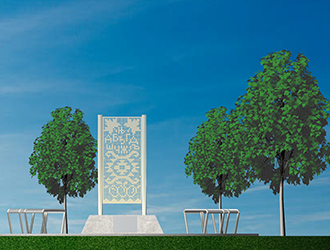Preserving and Protecting Our Natural Assets
The City values its natural areas and urban forest, and over the years has undertaken many initiatives to develop and implement policies and by-laws to support these systems, as well as programs for their stewardship and management. The Natural Heritage & Urban Forest Strategy is meant to build on these initiatives, as well as those of the City’s partners.
This Strategy (along with the supporting Urban Forest Management Plan) will provide direction and implementation tools to help ensure that the City protects, enhances, restores and expands its Natural Heritage System and urban forest by:
- leading by example and using its existing resources efficiently
- working with the community, local businesses, local schools and other partners
- building on existing, and creating new partnerships, with those already involved in supporting natural heritage and the urban forest, and
- targeting new resources to initiatives where the City and the community will see the greatest returns over the 20 year period of this Strategy.
Community Meetings
As part of this study, the City has engaged a wide range of stakeholders and held public information sessions. Two separate series of consultations were held for Phase 1 and Phase 2 of this project.
Thanks to everyone who attended these community meetings, and to those who have contributed to the process via telephone, email and at our stakeholder workshops. Your comments were considered during the preparation of the final reports. We hope to count with your continued involvement when the City implements these important plans.
Public meeting information resources
For information from the Phase 1 project consultations, please read the Phase 1 Project Overview and view the posters below:
For the Phase 2 project consultations, a number of the Phase 1 posters were recycled, and the additional posters below were also presented:
- Ecosystem Services
- Draft Vision and Guiding Principles
- Draft Objectives
- Draft Natural Heritage System (NHS) Targets
- Draft Urban Forest (UF) Targets
- Draft Planning Strategies – part 1
- Draft Planning Strategies – part 2
- Draft Management Strategies – part 1
- Draft Management Strategies – part 2
- Draft Natural Heritage System Expansion Areas
- Draft Natural Heritage Linkage System
- Draft Engagement Strategies – part 1
- Draft Engagement Strategies – part 2
- Draft Tracking Strategies
- Next Steps and Input
For an overview of the Draft Strategy (and supporting Urban Forest Management Plan Actions) please see:
- Phase 2 Draft Strategy Overview
- Phase 2 Draft Strategy Mapping
- Phase 2 Open House Presentation (June 20, 2013)
Comments on the Draft Natural Heritage & Urban Forest Strategy were received for a month until July 31, 2013, and comments on the Urban Forest Management Plan were accepted for a month, until August 30, 2013. A fill out survey for comments on the Urban Forest Management Plan was available online for several months.
All comments and feedback received were considered for draft revisions.
Complementary Studies
In April 2010, Mississauga City Council directed staff to carry out a feasibility analysis for expansion of the provincial Greenbelt Plan Area into Mississauga. This analysis has been conducted in the context of the Natural Heritage and Urban Forest Study. The analysis includes consideration of new developments in provincial legislation in particular Amendment 1 to the Greenbelt Plan, approved by the Province of Ontario in January 2013 that introduced the Urban River Valley designation.
Comments on this discussion paper were received for a month until September 14, 2013, access the final report.
Expansion of the Provincial Greenbelt Area into Mississauga
The City of Mississauga is pleased to invite you to an open house focused on the expansion of the Provincial Greenbelt into Mississauga.
When: Wednesday May 27, 2015 from 6:30 to 8:30 p.m.
Where: Bank of Montreal Room, Living Arts Centre, 2nd Floor, 4141 Living Arts Drive, Mississauga
Maps of the lands recommended to become part of the Greenbelt will be on display at the open house. Staff from the City of Mississauga will be available to answer questions about the process involved in identifying lands suitable for Urban River Valley (URV) designation.
Mississauga City Council has endorsed plans to expand the Provincial Greenbelt Plan Area by designating public lands within the Credit River corridor as Urban River Valley. This decision builds on a recommendation from the Natural Heritage and Urban Forest Strategy.
The City has identified 76 parcels of land totally approximately 194 ha (479 ac) along the Credit River corridor. City staff consulted with other public land owners within the Credit River corridor, namely the Region of Peel, Credit Valley Conservation and the Province of Ontario to discuss inclusion of their parcels along the Credit River.
With Council’s support, the City will submit a request package to the Region of Peel. The request to the Province of Ontario must be completed by the Region of Peel as the upper tier municipality.
You can read the News Release on Council’s Endorsement here.
